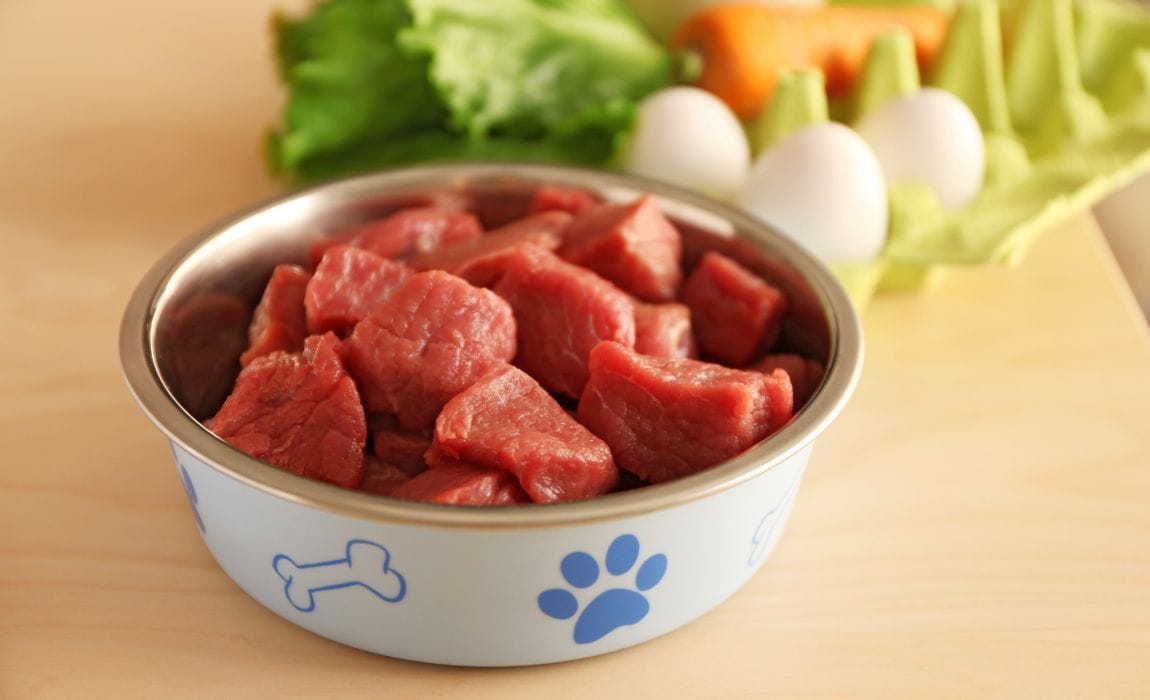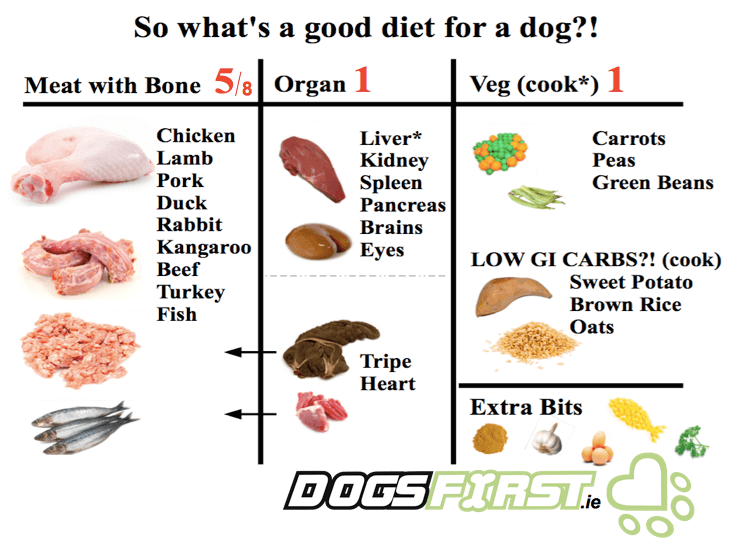
Raw Food for Dogs with Cancer: A Comprehensive Guide
Cancer is a devastating diagnosis for any dog owner. While conventional treatments like chemotherapy and radiation can be effective, they often come with significant side effects. Many pet owners are exploring alternative and complementary therapies to support their dogs during cancer treatment, and one area that is gaining attention is diet. Raw food diets, also known as biologically appropriate raw food (BARF) diets, have been proposed as a potential way to improve the health and well-being of dogs with cancer. This comprehensive guide will delve into the potential benefits, risks, and considerations of feeding a raw food diet to a dog with cancer.
Understanding Cancer in Dogs
Cancer is a complex disease characterized by the uncontrolled growth and spread of abnormal cells. It can affect any part of the body and can manifest in various forms, such as lymphoma, osteosarcoma, mammary cancer, and mast cell tumors. Cancer can impact a dog’s overall health, immune system, and quality of life.
Conventional Cancer Treatments for Dogs
Traditional cancer treatments for dogs include:
- Surgery: Removing the tumor surgically, if possible.
- Chemotherapy: Using drugs to kill cancer cells or slow their growth.
- Radiation therapy: Using high-energy rays to target and destroy cancer cells.
- Immunotherapy: Boosting the dog’s immune system to fight cancer.
- Palliative care: Focusing on managing symptoms and improving quality of life.
While these treatments can be life-saving, they often have side effects such as nausea, vomiting, loss of appetite, fatigue, and immune suppression.
The Raw Food Diet: An Overview
A raw food diet for dogs typically consists of uncooked meat, bones, organs, and vegetables. The goal is to mimic the natural diet of a dog’s wild ancestors, believing it is more biologically appropriate and can promote better health.
Key Components of a Raw Food Diet
- Meat: Muscle meat, such as beef, chicken, turkey, lamb, or fish.
- Bones: Raw, meaty bones that are safe for chewing and provide calcium and other minerals.
- Organs: Liver, kidney, heart, and other organs, which are rich in nutrients.
- Vegetables: Leafy greens, carrots, broccoli, and other vegetables, providing vitamins, minerals, and fiber.
- Fruits: Small amounts of fruits like berries and apples.
- Supplements: Additional supplements may be added to ensure a balanced diet.
Potential Benefits of Raw Food Diets for Dogs
Proponents of raw food diets claim several potential benefits for dogs, including:
- Improved digestion
- Healthier skin and coat
- Increased energy levels
- Stronger immune system
- Reduced risk of allergies
- Better dental health
Raw Food Diets and Cancer: What the Research Says
While the benefits of raw food diets for healthy dogs are debated, the potential benefits for dogs with cancer are even less well-established. There is limited scientific research specifically examining the effects of raw food diets on dogs with cancer. However, some studies and anecdotal evidence suggest that certain aspects of raw food diets may be beneficial for dogs with cancer.
Potential Benefits of Raw Food Diets for Dogs with Cancer
-
High-Quality Protein: Cancer cells thrive on glucose (sugar). A diet high in protein and low in carbohydrates may help limit the availability of glucose for cancer cells, potentially slowing their growth. Raw food diets are typically high in protein, which can help maintain muscle mass and support the immune system.
-
Omega-3 Fatty Acids: Raw fish and other sources of omega-3 fatty acids have anti-inflammatory properties and may help support immune function in dogs with cancer. Some studies have shown that omega-3 fatty acids can slow the growth of certain types of cancer cells.
-
Antioxidants: Raw fruits and vegetables are rich in antioxidants, which can help protect cells from damage caused by free radicals. Cancer cells produce more free radicals, so antioxidants may help reduce oxidative stress and support overall health.
-
Improved Palatability: Many dogs with cancer experience a loss of appetite due to the disease or its treatment. Raw food diets may be more palatable and enticing to dogs, encouraging them to eat and maintain their weight.
-
Reduced Carbohydrate Intake: Cancer cells tend to utilize carbohydrates for energy. By reducing carbohydrate intake, the growth of cancer cells can potentially be slowed down.
Risks and Considerations of Raw Food Diets for Dogs with Cancer
While raw food diets may offer some potential benefits for dogs with cancer, there are also risks and considerations to keep in mind:
-
Bacterial Contamination: Raw meat can contain harmful bacteria such as Salmonella, E. coli, and Listeria, which can pose a risk to both the dog and the people handling the food. Dogs with compromised immune systems due to cancer or its treatment are particularly vulnerable to these infections.
-
Nutritional Imbalance: It is crucial to ensure that a raw food diet is properly balanced to meet the dog’s nutritional needs. An improperly balanced diet can lead to deficiencies or excesses of certain nutrients, which can be detrimental to a dog with cancer.
-
Bone Hazards: Raw bones can splinter and cause injury to the mouth, throat, or digestive tract. They can also cause constipation or intestinal blockages.
-
Veterinary Consultation: It is essential to consult with a veterinarian or a veterinary nutritionist before switching a dog with cancer to a raw food diet. They can assess the dog’s individual needs and provide guidance on creating a safe and balanced diet.
-
Cost: Raw food diets can be more expensive than commercial dog food, especially if you are using high-quality ingredients.
Tips for Feeding a Raw Food Diet to a Dog with Cancer
If you are considering feeding a raw food diet to a dog with cancer, here are some tips to help you do it safely and effectively:
-
Consult with a Veterinarian: Discuss the diet with your veterinarian or a veterinary nutritionist to ensure it is appropriate for your dog’s specific condition.
-
Use High-Quality Ingredients: Choose fresh, high-quality meats, organs, and vegetables from reputable sources.
-
Proper Handling and Hygiene: Wash your hands thoroughly before and after handling raw food. Clean all surfaces and utensils that come into contact with raw food.
-
Freeze Raw Meat: Freezing raw meat can help kill some bacteria, but it is not a guarantee of safety.
-
Gradual Transition: Gradually transition your dog to the raw food diet over several days to avoid digestive upset.
-
Monitor Your Dog’s Health: Monitor your dog’s weight, appetite, energy levels, and stool quality. Report any changes or concerns to your veterinarian.
-
Supplement Appropriately: Depending on the specific diet, you may need to add supplements to ensure your dog is getting all the necessary nutrients.
Conclusion
Raw food diets may offer potential benefits for dogs with cancer, such as providing high-quality protein, omega-3 fatty acids, and antioxidants. However, there are also risks to consider, such as bacterial contamination and nutritional imbalance. It is crucial to consult with a veterinarian or a veterinary nutritionist before switching a dog with cancer to a raw food diet. With proper planning, preparation, and monitoring, a raw food diet may be a safe and beneficial way to support your dog during cancer treatment. Always prioritize your dog’s health and well-being, and work closely with your veterinarian to make informed decisions about their care.

